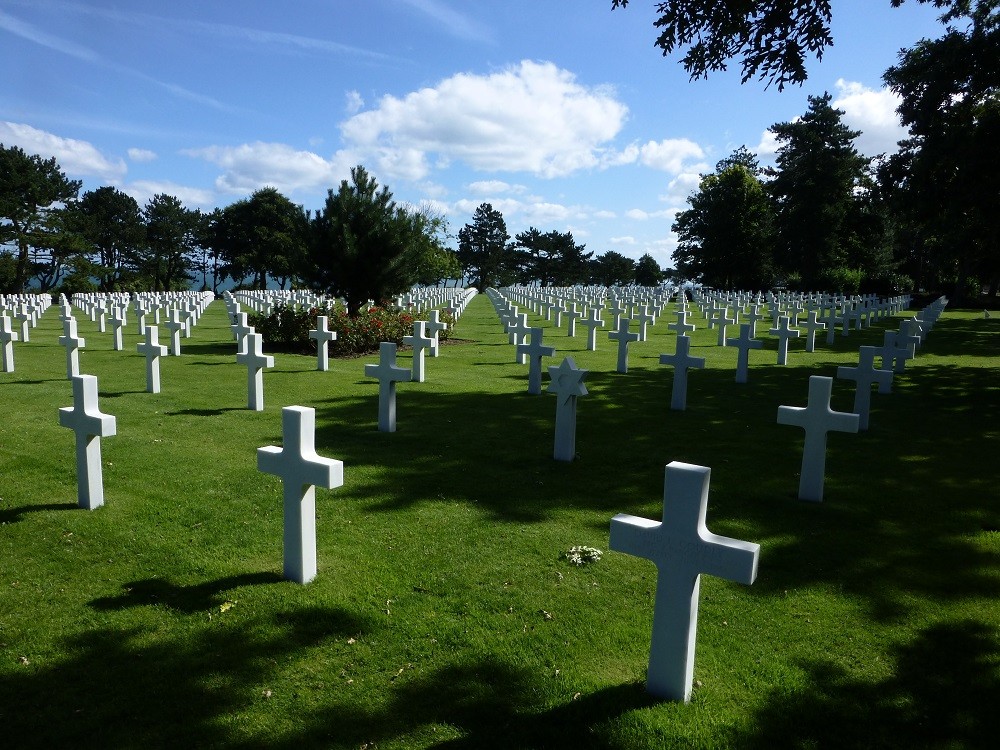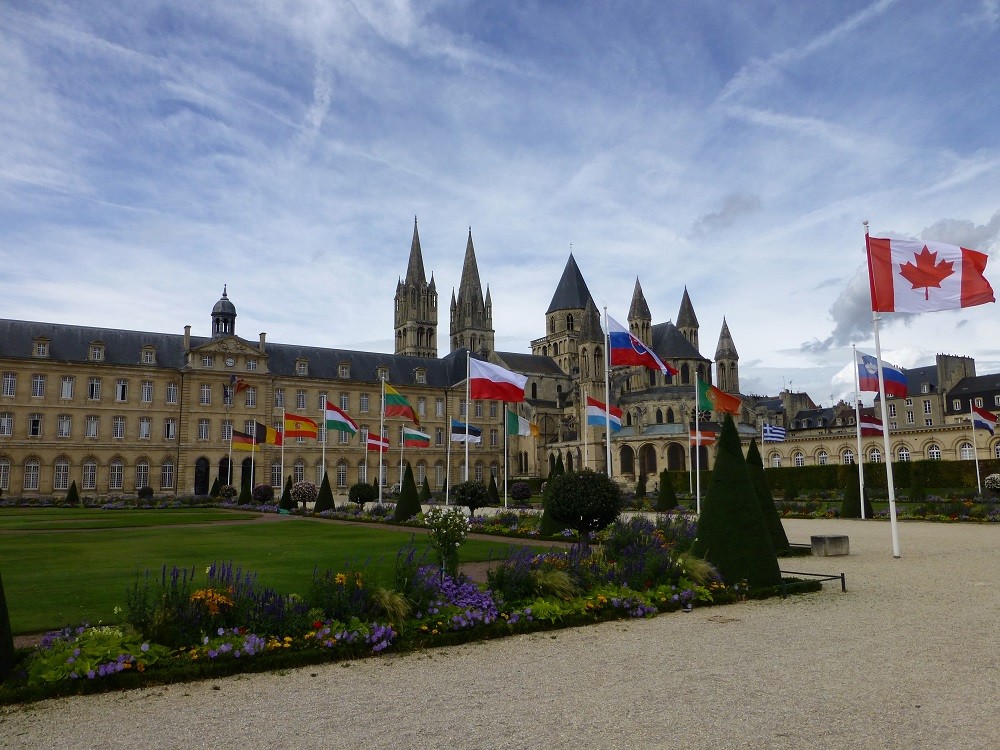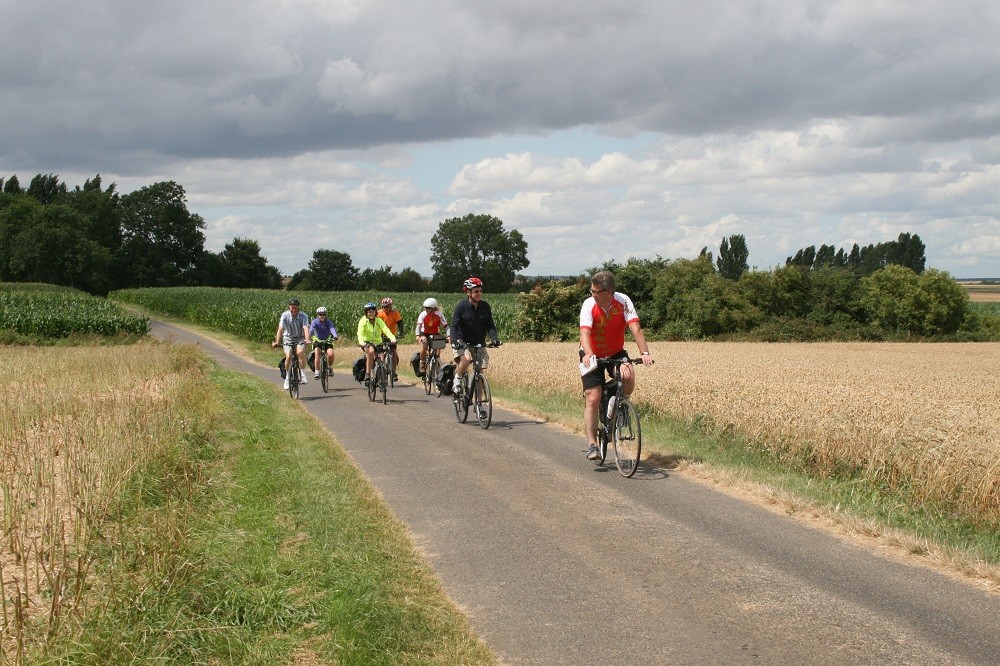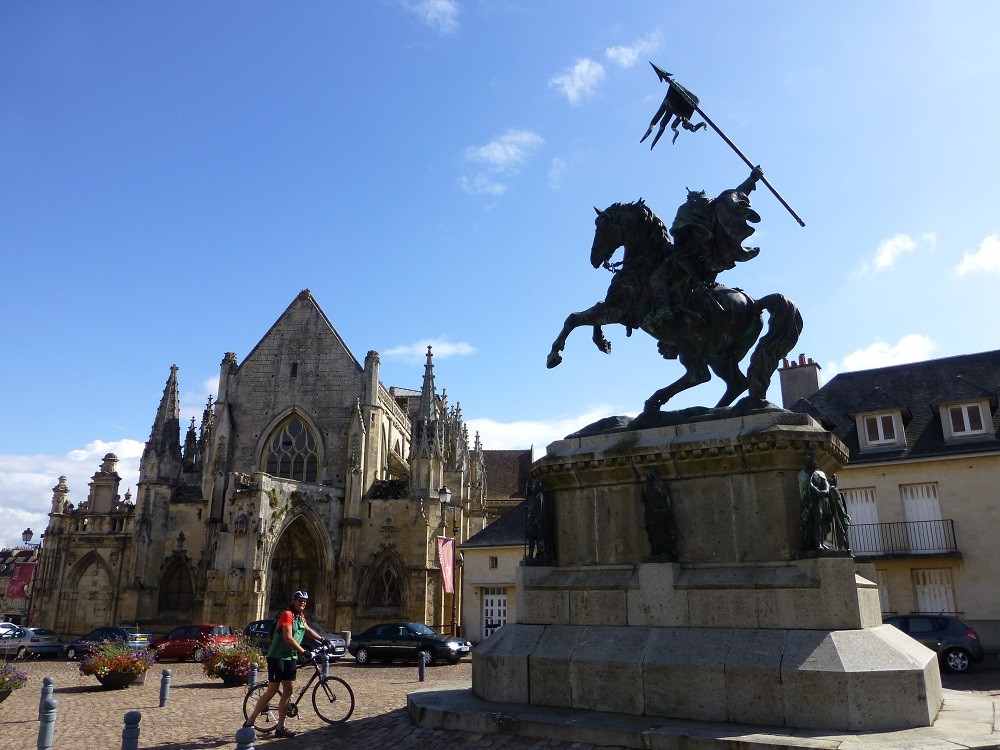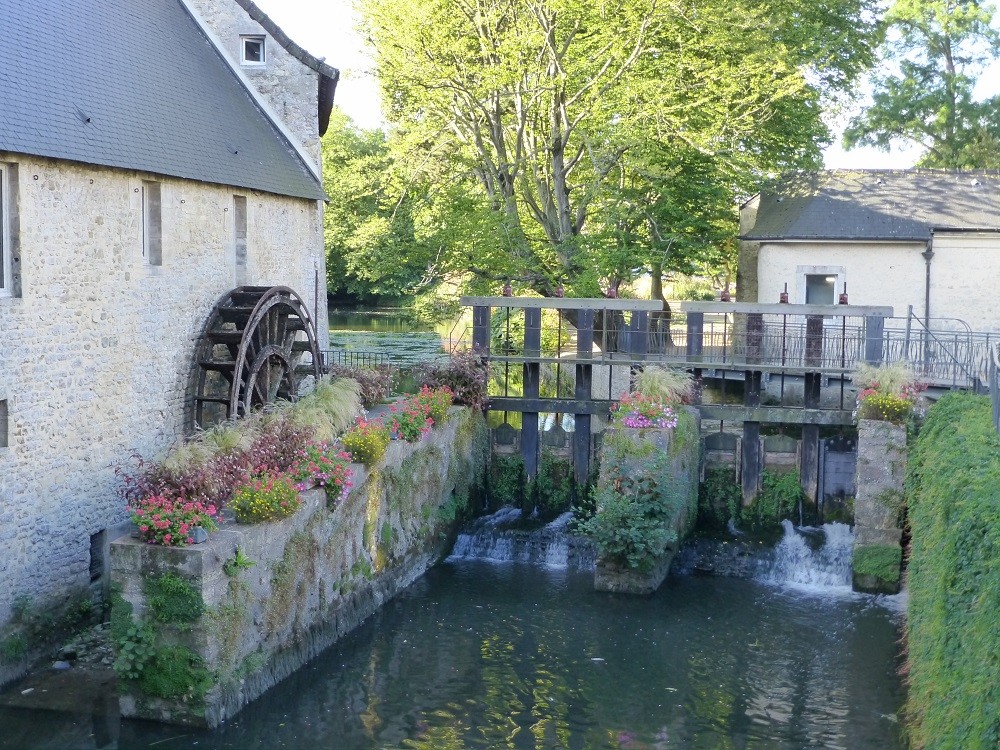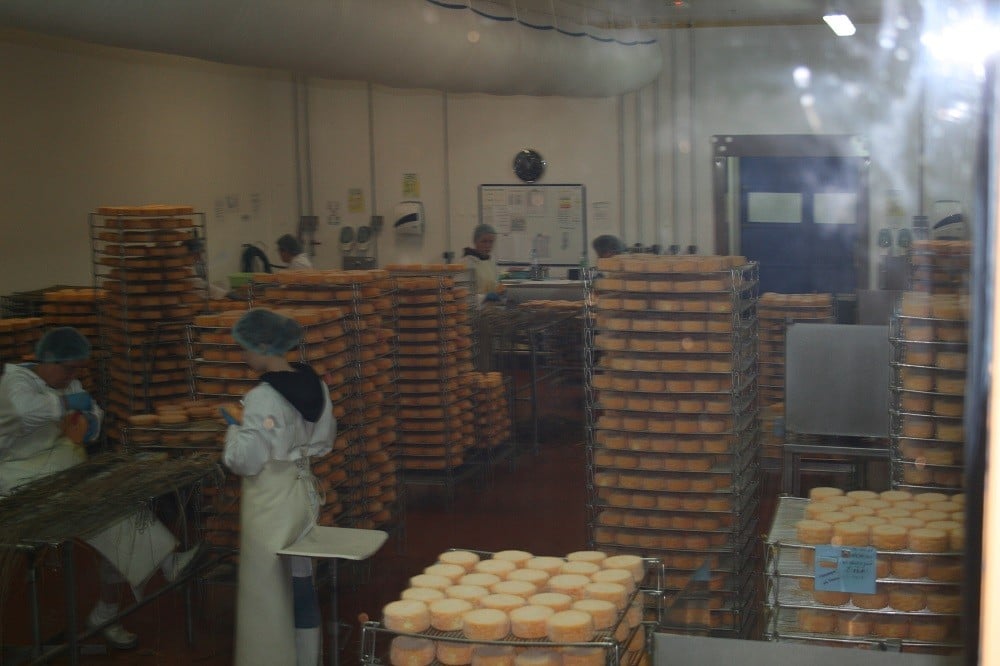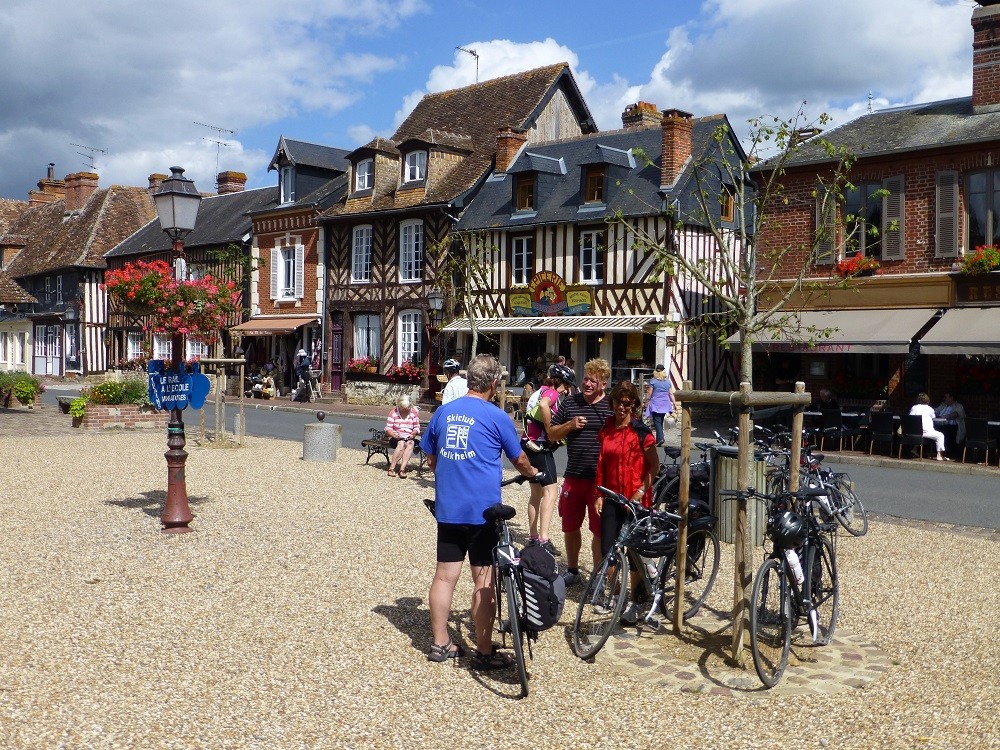What to expect
William The Conqueror, the Normandy Beaches and food.
Our Normandy cycling tour starts in Mézidon in the Pays d'Auge, home of Normandy cheese, cider and calvados. In Caen we’ll see William’s castle and the beautiful Abbeys that survived the bombing of WWII, and in Bayeux we’ll visit the famous tapestry.
On our way to Caen we’ll spend time at the Pegasus Memorial, the start of Operation Overlord. We’ll visit the beaches and memorials of the Canada Centre, the US cemetery at Coleville-sur-Mer and the spectacular remains of the Mulberry harbour at Arromanches.
All this plus we'll enjoy the rich food for which Normandy is famous throughout France.
FROM
- Single Room Supplement: +£380
- Self-Drive: +£45
- Join in London +£370
- Join in Paris +£150
- Transfer from Train Station: +£35
- Available Dates 2024:
July 6-13, August 31-September 7

ITINERARY
Day 1 Mézidon-Canon
We start our tour in Mézidon-Canon, at the Hotel Le Saint Pierre. The closest city with rail links is Caen.
Day 2 Mézidon-Canon to Pont-L'Eveque
An introduction to the Pays d'Auge. This is the region with all the apple orchards, where the Norman cows graze. This is where the cider and the calvados, and famous Normandy cheese are made.
After lunch we'll visit Lisieux, where there is a surprsingly large church! The Basilica is dedicated to Ste Thérèse of Lisieux, and the whole town is geared-up for the 700,000 pilgrims who visit each year. Ste Thérèse was quite a remarkable lady, and her story is worth a visit to the Basilica. She died, aged 24, in 1897, so there are photos, plentiful writings, and even a voice recording of this particular saint. And the Basilica is spectacular.
We're not quite finished for the day - we cycle along the valley of the river Touques, and we'll visit one of the most famous calvados distilleries in Château De Breuil. Then it's the last stretch into Pont L'Eveque and the Hotel Lion d'Or.
30 miles / 48 Km
Day 3 Pont-L'Eveque to Benouville
Today we turn West, still in the Pays d'Auge, and this morning we'll visit a cider farm in Repentigny. This is classic Normandy, the traditional Norman cows graze under their apple trees - they sell their milk to the Graindorge dairy in nearby Livarot, where it is made into Camembert, as well as the other 3 Normany appellations of Livarot (my favourite), Pont-l'Evêque and Neufchâtel.
But the apples go into apple juice, cider, and calvados, all made on-site. Wonderful.
We'll have lunch in the beautiful village of Beuvron-en-Auge, and then the tone of our week will change. Near the end of our day we'll cycle across Pegasus Bridge, the start-point of Operation Overlord, the Normandy Landings. But before we see Pegasus Bridge, we'll arrive in Ranville and visit the cemetery that contains the grave of Lieutenant Herbert Denham Brotheridge, the first Allied casualty of D-Day.
We stay in Benouville, a few hundred meters from Pegasus Bridge, and we'll explore the wonderful museum tomorrow.
31 miles / 51 Km
Day 4 Benouville, round-trip to Caen
Today we'll visit Caen, a short 10Km ride along the ship canal. But first, it's back to the museum at Pegasus Bridge. This is a great museum, dedicated to an extraordinary story.
One of the most interesting things about Operation Overlord, for me, is the way that the challenges were broken down into individual problems to be solved - how to take out the guns at the Pointe du Hoc, how to get vehicles from the Mulberry Harbours onto the beach. The first of them was how to capture the bridges across the River Orme and the Caen-Ouisterham canal, intact.
These two bridges were regarded as essential to move troops East, away from the beach landings, the only way of moving East without first taking Caen. The bridges were known to be heavily defended and prepared for demolition, so how to capture the bridges before the Germans could blow them up?
Parachutes of the era were not accurate enough, the only way to get close enough, without alerting the guards, was by glider. We'll see where the first glider landed - less than a hundred metres from the bridge. We'll discover more at the museum, it's an incredible story, and we'll be able to walk across the original Pegasus Bridge.
In Caen, we’ll visit William and Matilda's Abbey-aux-Hommes and Abbey-aux-Dames, as well as the enormous castle at the centre of Caen and the famous 'Caen Mémorial', the best of all the museums dedicated to the Normandy Landings.
Finally, we retrace our steps back to the Glycine.
19 miles / 30 Km
Day 5 Benouville to Arromanches
Today, we're all about the Normandy Landings. From Benouville we'll make our way to the coast, visiting the British & Commonwealth cemetery at Hermanville-sur-Mer on the way.
We hit the coast at Sword Beach, the eastern-most of the 5 designated landing areas. We cycle to Juno Beach, where we'll visit the Canada Centre in Courseulles-sur-Mer (can you guess who landed at Juno?), and finish our day in Arromanches on Gold Beach, the last of the 3 landing zones designated to British & Commonwealth (and some French) units.
Arromanches is famous as the site of the artificial Mulberry Harbour. The Allies realised they needed a port, to land the millions of tons of people and equipment needed to invade France. In 1943, Canadian troops attacked Dieppe to test the feasibility of capturing a port - it didn't go well.
Churchill's conclusion was that if they couldn't capture a port, they'd have to take one with them. This was the Mulberry Harbour project. Originally there were 2 of them, one off Gold Beach, one off neighbouring Omaha Beach. The Omaha harbour was so badly damaged in storms that it was largely unused, but Mulberry B became, for the next 4 months, the busiest port in the world.
You can see the scale of the Mulberry Harbours by the pattern of wrecked Caissons (hollow concrete structures) that formed a breakwater around Arromanches, and are still visible today. Visible? You can't miss them! They're huge!
These caissons were towed from the UK into position and sunk, to provide a breakwater, inside which the landing stages and roadways were built. The roadway from the harbour to the beach was a mile long, the scale of this undertaking is colossal.
My favourite story is when someone realised that while the roadways had been designed to take 12 ton vehicles, some of the US vehicles weighed up to 20 tons. An urgent message was sent to the US troops to halt all traffic, but all the over-weight vehicles had already been driven onto the beach in blissful ignorance.
There's a wonderful museum dedicated to the harbours, and their operation, and we'll spend some time there before heading just a few metres to the Hotel les Villas d'Arromanches.
21 miles / 34 Km
Day 6 Arromanches to Isigny-sur-Mer
This morning we're still on Gold Beach, and we'll follow the coast to the delightful little fishing harbour of Port-en-Bessin, where I'm sure we'll find time for a coffee.
From Port-en-Bessin we're now in Omaha Beach zone, and we're headed for the US cemetery of Colville-sur-Mer.
It's interesting how the different allies treated their dead from Normandy. The French disinterred the bodies after the war and returned them to their villages. The British & Commonwealth dead tended to be buried in military cemeteries close to where they died. American families were given the choice - 'would you like your family member returned to the USA, or would you prefer they were buried here in Normandy?' About a third opted for their loved-ones to remain in Normandy, where they're buried altogether in the huge military cemetery in Colville-sur-Mer. And the German dead are buried without fanfare in two colossal cemeteries, one of which we'll see tomorrow.
The American cemetery is a magnificent place, with sculptures, a reflecting pool, beautiful gardens and a path down to Omaha Beach, as well as the graves of over 9,000 American service personnel.
It's worth a walk down to the beach. The ridge overlooking Omaha Beach looks very different from below!
We'll have lunch after our visit, and make our way to another spectacular site, Pointe-du-Hoc. This was the site of a formidable German battery, and a key objective of Day 1 of the Normandy Landings was to scale the cliffs at Pointe-du-Hoc and silence the guns.
This was one of the costliest battles of the initial phase of Operation Overlord. We'll visit the site, where the huge gun emplacements are clearly visible, and see the shocking scale of destruction left by the naval bombardment. Pointe-du-hoc is now looked after by the American Battle Monuments Commission, and it's well-worth a walk round.
Finally we'll head off the final 12 Km to Isigny-sur-Mer, home of France's most famous butter - I kid you not. We're staying at the Hotel de France.
30 miles / 48 Km
Day 7 Isigny-sur-Mer to Bayeux
Today is about balance. Yesterday we visited the immaculately maintained American cemetery at Coleville-sur-Mer. Today, we turn back East and we'll visit the enormous German cemetery at La Cambe, sombre, stark but still very moving.
And then one of the nicest stretches of cycling of our week as we follow small roads into Bayeux. We'll stay at the Hotel Lion d'Or, General Eisenhower's HQ during the Nomrnady campaign. Bayeux has a beautiful cathedral, but is most famous for the spectacular tapestry detailing William the Conqueror's campaign to defeat Harold 1st to become the King of England.
The pedants among us may point out that it's actually an embroidery, and not a tapestry at all. Who cares? I never get tired of it, it really is amazing, and we'll make sure to see it.
Bayeux is beautiful. Medieval streets, lots of nice bars, a little river running through the centre. It's worth spending a bit of time in Bayeux.
23 miles / 37 Km
Day 8 Onwards!
Train connections from Bayeux to Paris / London, etc.
JOINING DETAILS
Please take careful note of the train times. Our transfers are scheduled to meet these designated trains; if these train times are inconvenient, please contact us so that we can be sure of arranging appropriate transfers.
Quick links

